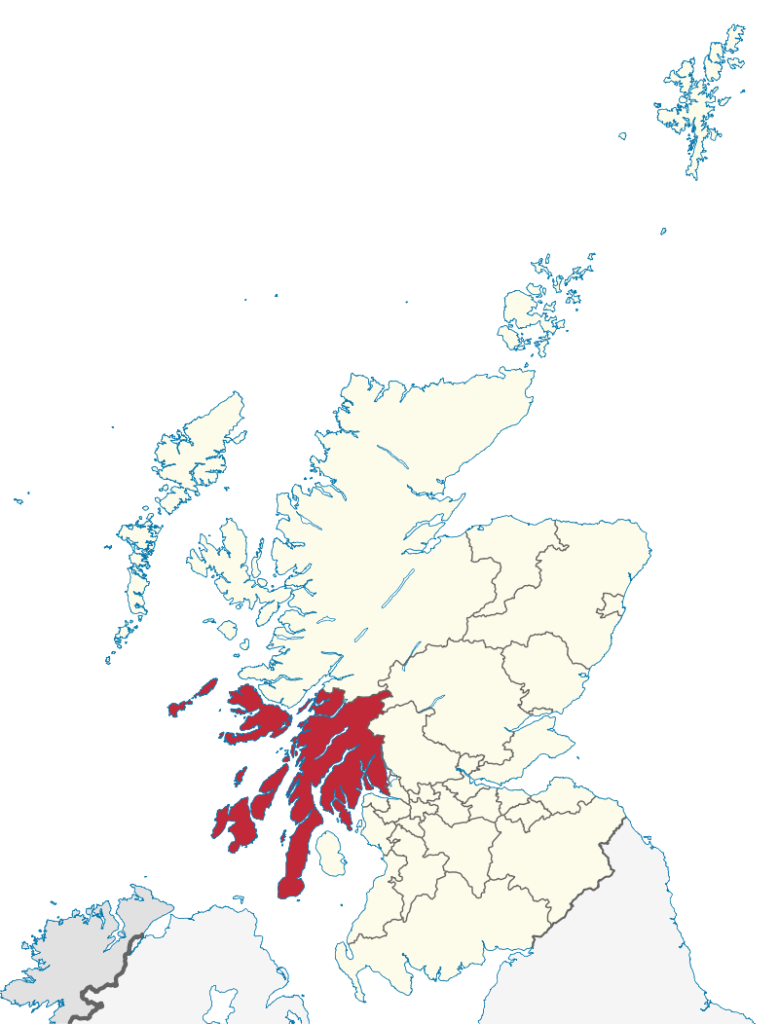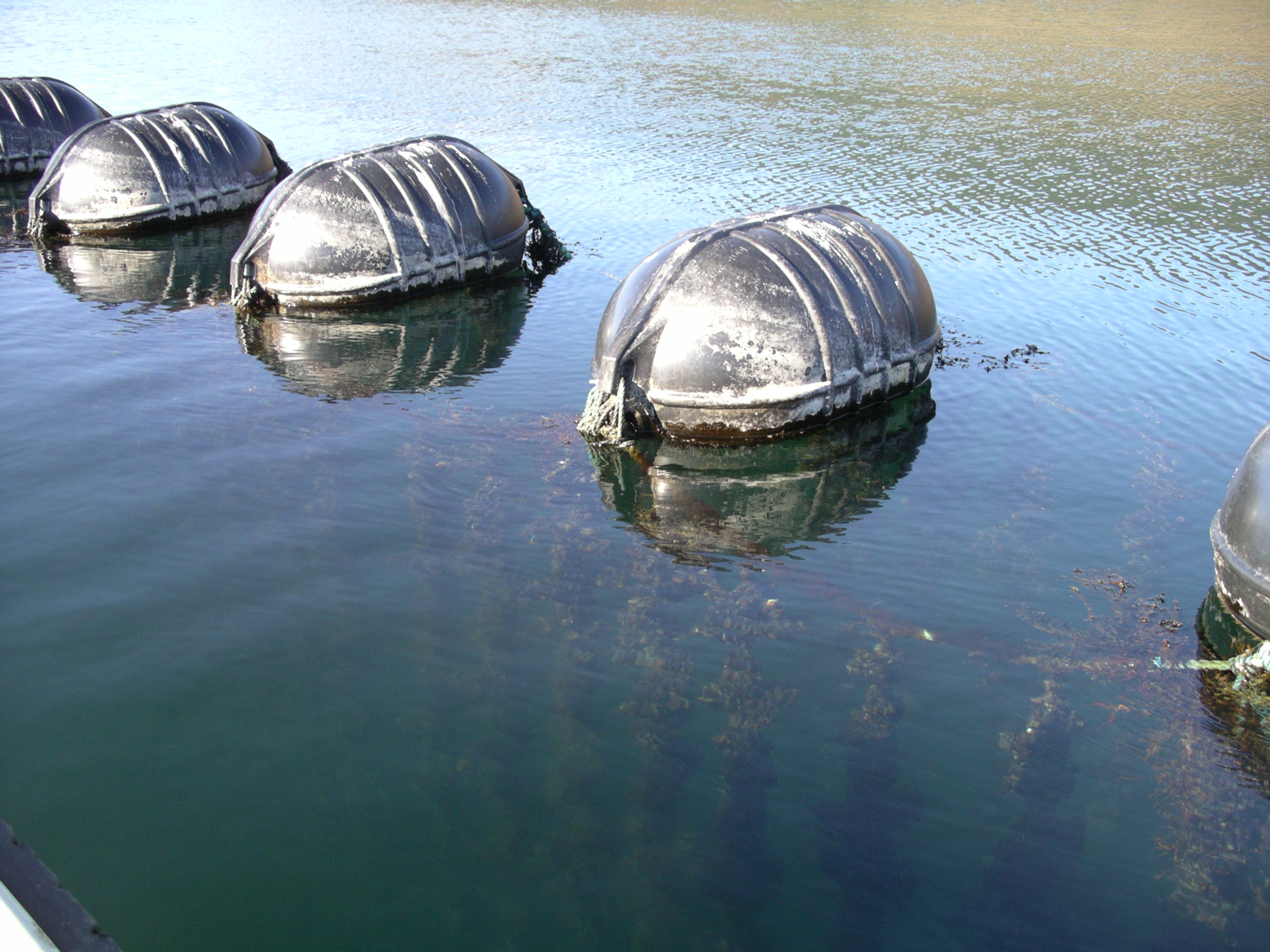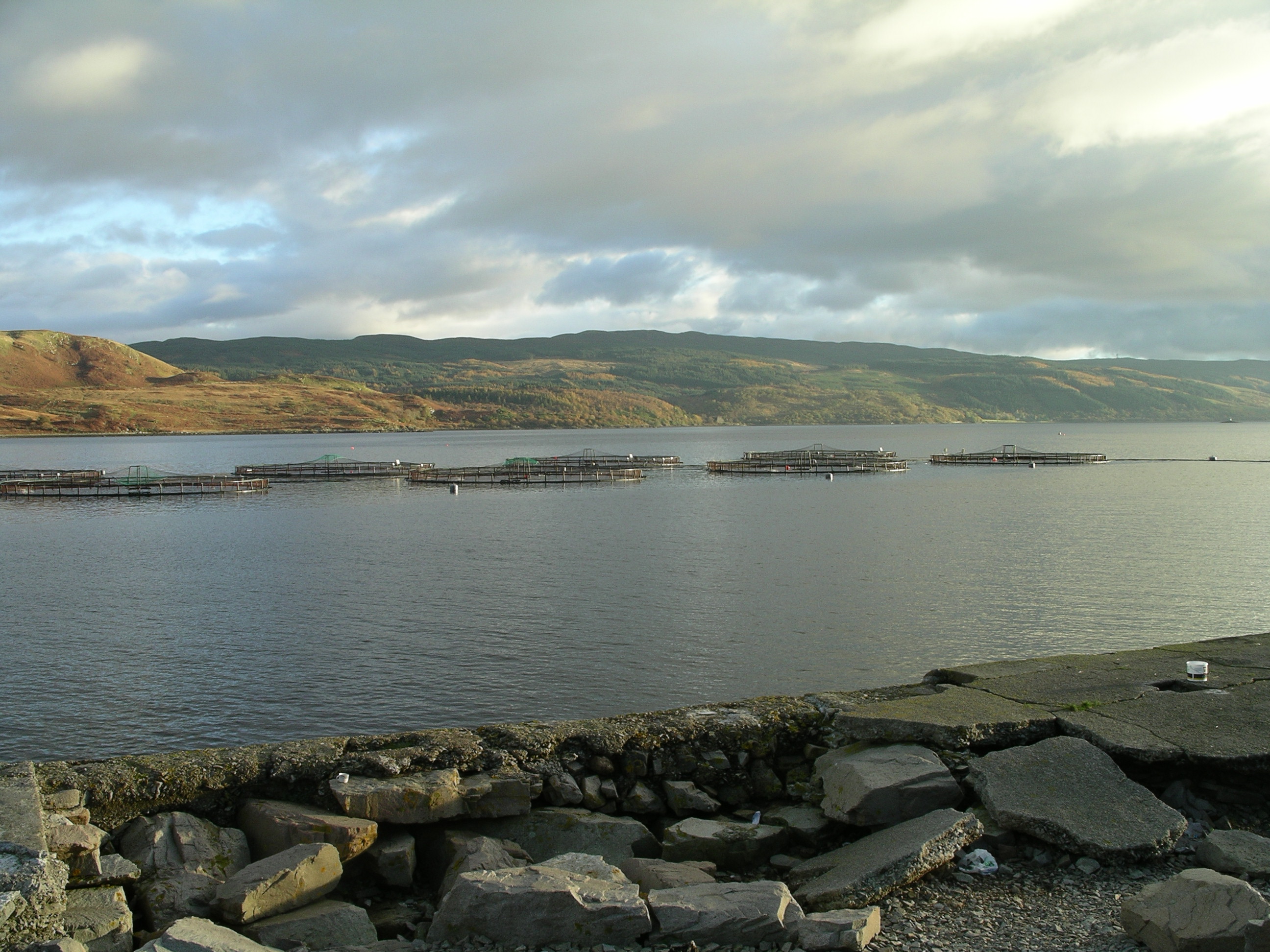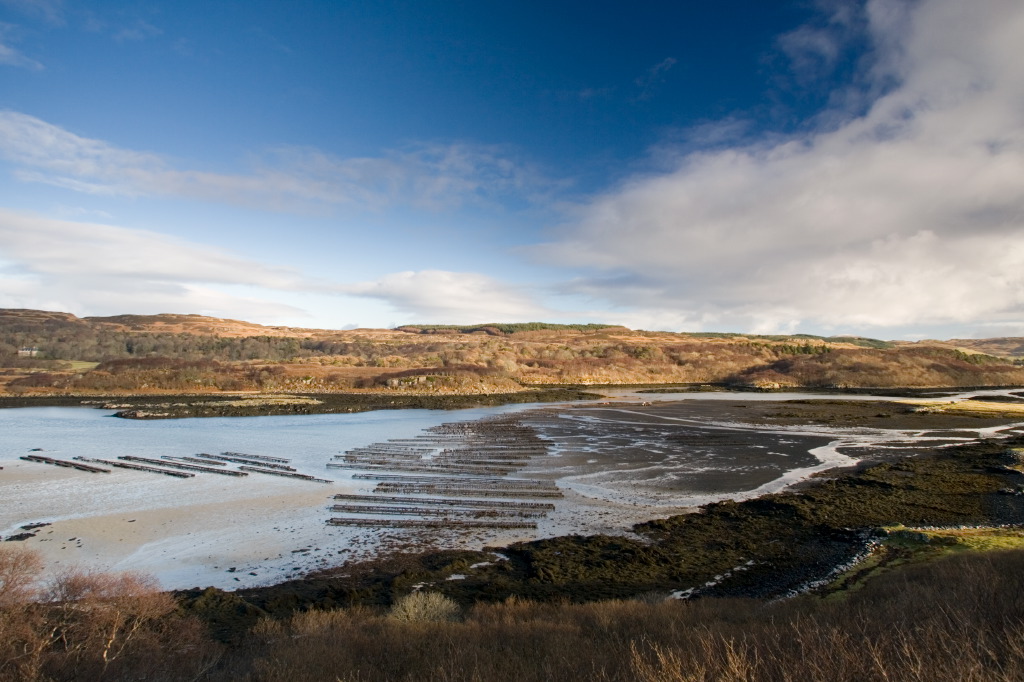Argyll case study
Argyll context
Argyll has the second largest area (8,055 km2, 10%) of the 37 counties of Scotland. It has a population of 87,660 (2014) and is ranked 24th in terms of county population. It is very rural with no cities and only 5 or 6 small towns. Its economy is based on the service sector with 15% tourism-related. Argyll has relatively high levels of employment in agriculture, fishing and aquaculture.
Production and producers
There are 11 salmon farming enterprises active in 2014 in Scotland 4 were active in Argyll plus one marine trout company operating a total of 40 active sites. The major finfish species produced in Argyll is Atlantic salmon. Scotland’s Marine trout sector is entirely based in Argyll and this production comprises about 28% of total Scottish trout production. There is a small production of Halibut (~ 100 tonnes) in Argyll.
Shellfish statistics are reported for Strathclyde, the vast majority of which is in Argyll so these are used here. There are 49 shellfish farming enterprises in Argyll. The major shellfish species produced in Argyll is the blue mussel.
Argyll Aquaculture production 2014
| Salmon | Marine trout | Mussels | Pacific oyster | Native oyster | Queen scallops | Scallop | |
| t | 34976 | 1909 | 822 | 158.4 | 18.9 | 0.9 | 1.3 |
| 000s | – | – | – | 1983 | 241 | 17 | 10 |
| % of Scottish | 19.5 | 100.0 | 10.7 | 58.5 | 99.6 | 94.4 | 20.8 |
Aquaculture Development issues
The AquaSpace project held a stakeholder workshop on January 18th 2016 at SAMS, Oban. The stakeholders were asked to address the question: “What are the main issues that constrain the expansion of aquaculture in Argyll”
The following is a draft synthesis of the workshop discussions:
Evaluation of current policy and planning regime for aquaculture
- There is a lack of integration between national policy (which is driving growth of aquaculture), local (processing planning applications) and decision making, and how these relate to industry needs (commercial and technical); this affects investor confidence and cause uncertainty on the development of the sector as a whole, and of specific projects. An opportunity exists through the review of Local Development Plans by Local Authorities to address this interplay across scales – is this sufficient?
- Is Town & Country the best mechanism for aquaculture development? Issues related to e.g. flexibility in project development.
- Relating marine and terrestrial planning (shoreline infrastructure and access)
- Consenting Review due mid-February may recommend changes.
Spatial Planning and Co-existence of Aquaculture with other sectors and interests
- Space is being used inefficiently e.g. unused lease areas using up potential development space; how can these be re-leased?
- Considering aquaculture in planning – need to consider the mobility of sites– not permanent in a particular location. How could MSP address these issues?
- What are the benefits of co-existence? Limited availability of suitable space for aquaculture, concern regarding interaction of aquaculture with other interests (conservation, tourism, fishing, etc.) e.g. in Argyll. Allocating space will not lead to sufficient development, need to aim for benign interactions (at best) through co-existence.
- What are the barriers to co-existence? Industry can’t lead in multi-use, as they will do what is legally required of them. It needs to be collaborative between industry and regulatory authorities, so that new approaches to planning and consenting to facilitate co-existence can be developed.
- Collaboration also needed between sectors to enable co-existence
- Landscape / seascape issues – zoning in planning may be too restrictive.
- What is the experience with spatial planning? ICZM plans informative and useful but limited in reach due to voluntary nature, limited geographical scope and rapidly dating so need regular maintenance – what can we learn from ICZM?
- Include integrating infrastructure with other sectors e.g. renewables and IMTA
- Cumulative impacts is a complicated aspect of co-location and need collaborative approaches in order to understand the combined effects of multiple activities.
Developing Accountability in Aquaculture
- Need to understand the balance of responsibility / accountability between different actors; of developers in delivering their project commitments and other deliverables e.g. monitoring of environmental effects as determined through EIA process, escapes of wild fish, site tidiness, on-going management, etc. Lack of accountability when things go wrong (escapes, sea lice outbreaks).
- What level of enforcement is appropriate? Some issues are simply not covered by current legislation (e.g. wild fish issues).
- The role of monitoring and enforcement – surveillance and management critical.
- Accountability of actors in governance (regulators, local authorities) in ensuring that national policy commitments in aquaculture development are delivered, in terms of addressing food security, Blue Growth, etc. Need to provide more direction at the regional level to enable this, and to take account of local challenges which may not be apparent at a policy level.
- Better and more transparent accountability of actors in aquaculture could ensure more positive public perception and engagement, and also relates to investor confidence.
- Accountability to communities in delivering the benefits of AC development locally, and over the long term.
Improving public perception of aquaculture (related to accountability)
- Mixed perceptions of the aquaculture industry, which can be due to mis- / lack of information, better outreach needed to improve opinion of the sector and in particular the benefits it provides for the community.
- Misconceptions of the impacts of the industry.
- Perceptions highly variable across regions, depends on a range of socio-cultural factors, experience, etc., but can be indicative of lack of understanding.
- How does industry communicate? Do we need to spend some effort on consulting with public and the reality of their perceptions? Is it sufficient to put ‘key myths’ on a website to debunk?
- Need to focus on the role of AC in food provision as part of wider education on its importance.
- Accountability affects public perception e.g. how sea lice is dealt with; escapes.
- Outreach activities necessary in order to develop faith from communities and ‘social licence’ to operate.
- Need to better promote the benefits (including community benefits) from aquaculture including improving water quality and sink for carbon (both shellfish), and possibly relating this to the developing emphasis on the circular economy and understanding and maximising benefits obtained throughout the supply chain.
- Perceptions vary across regions and scale (e.g. different views presented at national and local level) and proximity to site.
- Terrestrial farming raised as a comparable sector to aquaculture; how can the public perception of aquaculture be brought to a level/fair comparison with farming?
- Although need to consider differences in perception between different areas of the industry, e.g. shellfish different (‘enhanced fishing’ rather than farming).
- Community engagement, including models of ownership / benefits sharing, to empower communities as has been promoted in renewable energy, related to the wider policy context Land Reform Agenda. Long-term accountability to community.
- Relates to the scale of development proposed in an area– needs to be economically viable and generate appropriate benefits for the community.
- Need public communication but on a bigger scale, difficult at a company level. Role of EU to develop projects that can positively impact on public perceptions. Collaborate with other sectors.
- Relate to youth engagement and employment in AC – need to target schools and use mechanisms such as apprenticeships and address the perceptions that it’s just a physical job, and highlight that skills are transferrable.
Business Development
- Uncertainty (due to the broad range of issues) affecting investment.
- Consistency of planning processes across Scotland can affect developer strategies for where to develop. Differences in community preference can be expected (as dependant on culture, personalities, etc.) but planning process should be fairly and relatively consistently applied.
- Business development: Is there anything to learn from the CAP e.g. it supports new entrants to farming could there be an equivalent in aquaculture?
Development of novel techniques and approaches
- Innovation in solutions – can we identify areas through planning for the testing of new technologies (e.g. offshore technologies, fish health R&D, and reducing chemical usage) in addition to commercial sites?
- Such beneficial solutions need to be supported (including by public investment) until they becomes economically viable.




